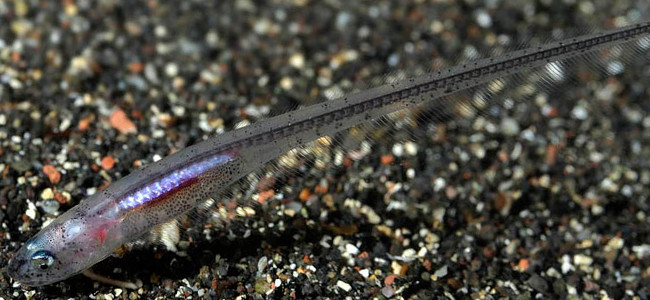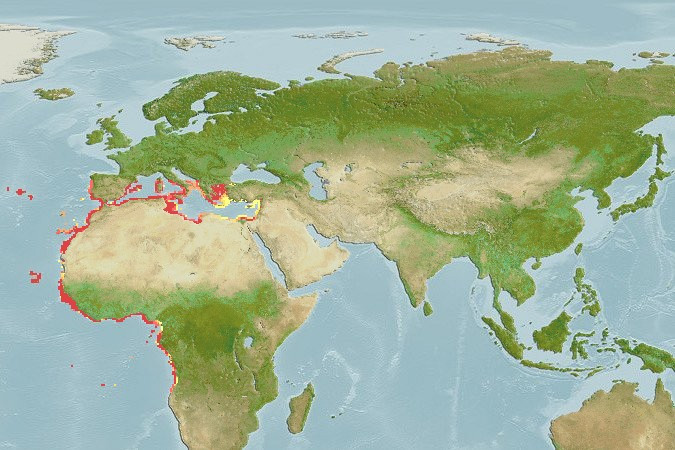Carapus acus, commonly known as the pearlfish, is an intriguing species belonging to the family Carapidae within the order Ophidiiformes. Its scientific name derives from Latin, where ‘Carapus‘ means ‘carpus’ (related to the structure of its skeleton) and ‘acus‘ translates as ‘needle’, a reference to its elongated, slender shape. This species mainly inhabits tropical and subtropical waters of the eastern Atlantic and the Mediterranean Sea, usually found on sandy bottoms, seagrass meadows, and particularly inside marine invertebrates such as sea cucumbers.
Morphologically, Carapus acus can reach lengths up to 20 cm. It has an elongated, slender, almost translucent body with colors varying between silver and white, allowing it to blend with its surroundings and evade predators. The most distinctive feature is its small, pointed head, adapted for life inside sea cucumbers. Unlike similar species like Carapus bermudensis, Carapus acus shows paler coloration and a less robust body shape. Additionally, Carapus acus has a more developed caudal fin compared to its congeners, another identifying trait.
Regarding feeding habits, Carapus acus is primarily carnivorous, feeding on small marine invertebrates, including crustaceans, molluscs, and larvae of other marine organisms. This species uses its habitat inside sea cucumbers to ambush prey. Besides active hunting, it may also consume tissues and bodily fluids of its hosts during stress or food scarcity.
The reproductive habits of Carapus acus are equally fascinating. It is oviparous, reproducing during warm months typically from spring to late summer. Fertilization is external, with females releasing eggs into the water where males fertilize them. The larvae, called vexillifers, have a prolonged planktonic phase before settling and metamorphosing into juveniles, which then seek to enter sea cucumbers or, more rarely, other marine invertebrates like starfish.
An interesting fact about Carapus acus is its notable commensal relationship with sea cucumbers, mainly from the family Holothuriidae. This association benefits the fish by providing shelter and a constant food source, while the sea cucumber appears largely unharmed, though it occasionally loses some tissue. The closeness of this relationship is so remarkable that the pearlfish can enter and exit its host through the cloaca without causing apparent damage.
In conclusion, Carapus acus is a fascinating underwater specimen, both for its unique lifestyle and its morphological and behavioral adaptations. Its ability to live symbiotically with other marine organisms and its interesting life cycle make it an important subject of study for ecologists, marine biologists, and diving enthusiasts alike.
Photos:


 from
from